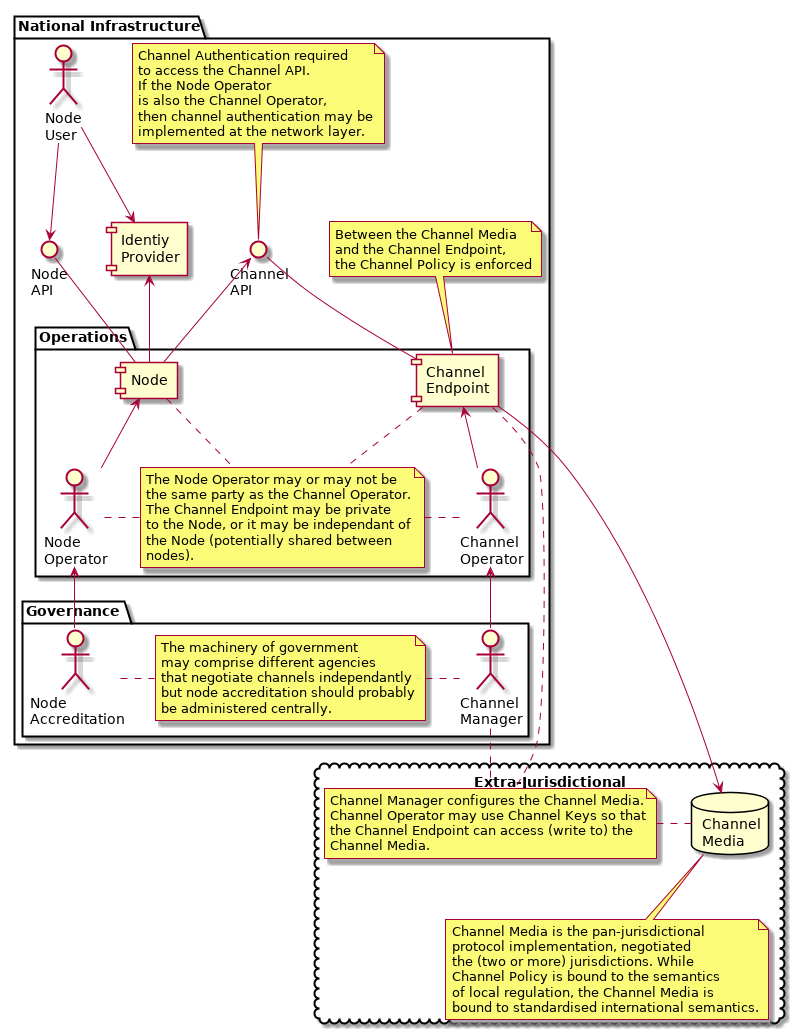Terminology¶
Glossary¶
Term |
Description |
|---|---|
Node Users |
Business Layer Systems that communicate with one or more Nodes to send and receive messages to other Jurisdictions. |
Node API |
A set of APIs used to send and receive messages over channels. |
Node |
Service that provides the Node API, sends messages (after validating them) to a channel on behalf of a jurisdiction, and recieves then disburses messages sent to the jurisdiction over the channels. The Node is authorised (Node Accreditation) to send and recieve messages messages on behalf of the Jurisdiction. The node validates each messages to to ensure compliance with the channel policy (from the juridictional context). In other words, nodes are trusted by the accrediting body to apply local knowledge to the interpretation of channel policy in that jurisdiction. The Node is also a router. It decides which channel (Node Routing Policy) each valid message should be used to sent the message to the recipient Jurisdiction. Nodes also receive inbound messages, retrieves the associated document (object) and store these for Node Users, as well as notifying the appropriate Node when new messages have been received.
|
Channel |
Implementation of an agreement between jurisdictions to exchange particular types of messages.
|
Channel Policy |
Rules, expressed in a common business language, that describe the acceptable use of the channel. |
Channel Media |
Append-only database where channel messages are written. Presumably a distributed database.
|
Channel Endpoint |
Deployed system that can read and write to the channel media. |
Channel API |
Abstraction over channel media. Feature of the Channel Endpoint used by the IGL Node to send messages. |
Channel Keys |
Notional mechanism for restricting access (in particular write access) to legitimate channel endpoints. |
Channel Operator |
Party with access to the Channel Keys, who provides the Channel Endpoint. |
Channel Manager |
Party responsible for the channel. May have the ability to grant/revoke Channel Keys. |
Channel Authentication |
Mechanism to restrict access to the Channel API, So authorised Nodes can access the Channel Endpoint. Not to be confused with Node Authentication (restricting access to the Node to Node Users), Channel Keys (used to restrict access to Channel Media, to Channel Operators) or document issuer / verification mechanisms. |
Notes¶
